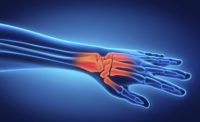After brain or spinal cord injuries, paralysis of the hand can occur. Due to the restrictions in the professional and private spheres, this is a great loss of quality of life for those affected. The University of Stuttgart has now developed a hand exoskeleton with which the gripping ability of a paralyzed hand can be restored.
The exoskeleton consists of a central assembly module and individual, movable finger modules. Compared to existing hand exoskeletons, the model developed in Stuttgart has several advantages: On the one hand, the modules can be designed individually for each patient and, above all, the finger modules can be designed very flexibly. This also allows the patient to spread his hand and move it sideways and to move individual fingers.
On the other hand, this type of design makes the exoskeleton easier to handle and the patients can put it on themselves. Thanks to the open shell system, patients can attach the modules individually to their hands, as explained by inventor Jonathan Eckstein, a research assistant in the field of drive systems and exoskeletons at the Institute for Industrial Manufacturing and Factory Operation (IFF). The individual modules are plugged in and can then be stretched or bent with a built-in motor.
The newly developed exoskeleton is made of a special plastic material. This makes it possible to manufacture the individual modules with a small wall thickness, which is particularly important for the finger modules. This makes it very light, stable and portable at the same time.
The next step in the project will be implementing additional control features for the exoskeleton. Currently, the module is connected to electromyography (EMG) and distance sensors as an independent device that can be worn on the forearm in order to first evaluate the electromechanical functionality of the exoskeleton.
Source: eenewseurope.com


